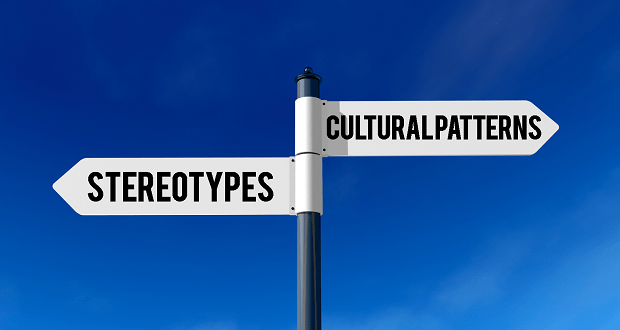
This post is about the differences between stereotypes and cultural patterns. As cultural markers of difference, or “signposts”, stereotypes and cultural patterns are similar in that they both act as signs that point and guide our attention to realities beyond themselves. But the similarities end there. As signposts, stereotypes are small, inaccurate, and lead us to places of exclusion or danger; cultural patterns are big, inclusive, and point to our beautiful diverse complexities of our cultural groups and identities.
This imagery of a highway lined with various signposts has been useful for me as I think about the work we do as D&I practitioners in celebrating the importance of our differences—which is not always straightforward or easy to grasp. A participant in a session recently, highlighted the importance of understanding the differences between stereotypes and cultural patterns when he asked me, “so if growing in cultural competence means understanding and recognizing differences, how do we do it in healthy ways that don’t offend or misrepresent others?” This is a great question. And it underscores the importance of understanding these cultural signposts and their function.
If our only signposts of another culture, group, ideology, or way of life are stereotypes, then we are bound to drive off further into the foggy terrain of harmful and dangerous illusions—exposing ourselves to all kinds of hazards in the way of offensive language, misunderstandings, macroaggressions, and at worst, deadly decisions. But when we drive the highway of inclusion with the intent to understand, we will follow the signposts of cultural patterns which are markers of differences that point to the lived realities of the diverse world we seek to see more clearly.
A final thought on the usefulness of this highway/signpost metaphor is that both cultural patterns and stereotypes serve the function of pointing to bigger realties. Stereotypes leading to sweeping illusions of an entire group that is false, denigrating, and based on a slice of reality: cultural patterns lead to more honest, loving, inclusive, and diverse pictures of the world and people. But cultural patterns are useful in so far as they are used as signs to get us to deeper understanding and living inclusively. I was reminded of the dangers of cultural patterns in another session when a well-meaning, white woman shared some recent research she had heard on NPR about poor, black communities. Her comments, though informed and based in data, were offensive to several black women in the room who shared that her input was still a perspective of a cultural outsider speaking about, and for, a community that she admittedly had no experience with. This was akin to a traveler, outside of their car, sitting underneath a signpost observing its message—without continuing on to the destination of more inclusive living.
Cultural identities and cultural patterns are guides to more intimate connections and deeper understanding; but they can also be misused when we mistake the signpost for the destination. Thinking about our identities and cultural worlds as intersectional is helpful here. A single signpost (identity) can only point to so much—one part of our experience or self. But when people can see and follow all our complex and intersecting signposts that will lead them to a more full and honest picture of who we are and what we’re about. As cultural beings, with limited views of the world, we are bound to make sense of the world and each other through signposts—either leading us to narrow, dark, foggy, and dangerous side streets or to more vibrant, clear, diverse, destination of inclusion. The difference will be if we are driving with our eyes open to understand and see the world more clearly or focused on the signs themselves and not the destination.


















